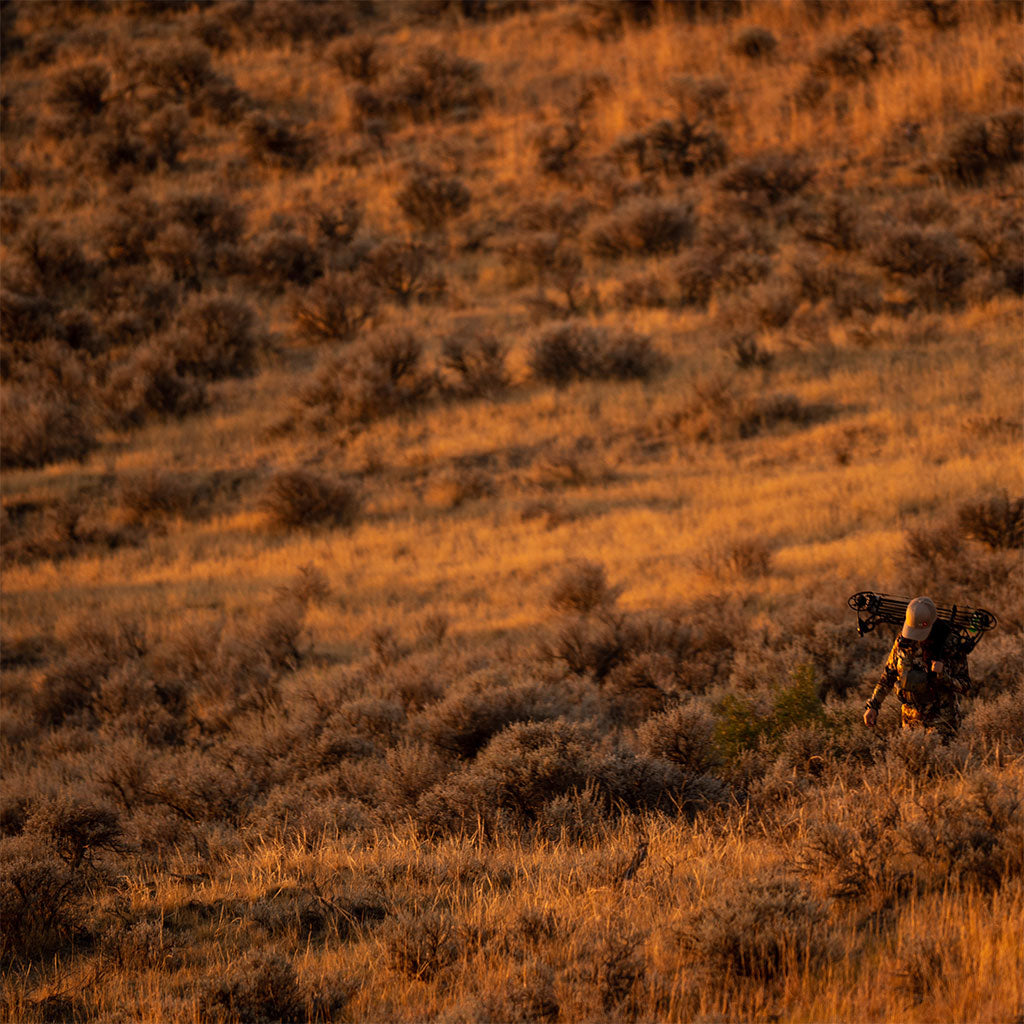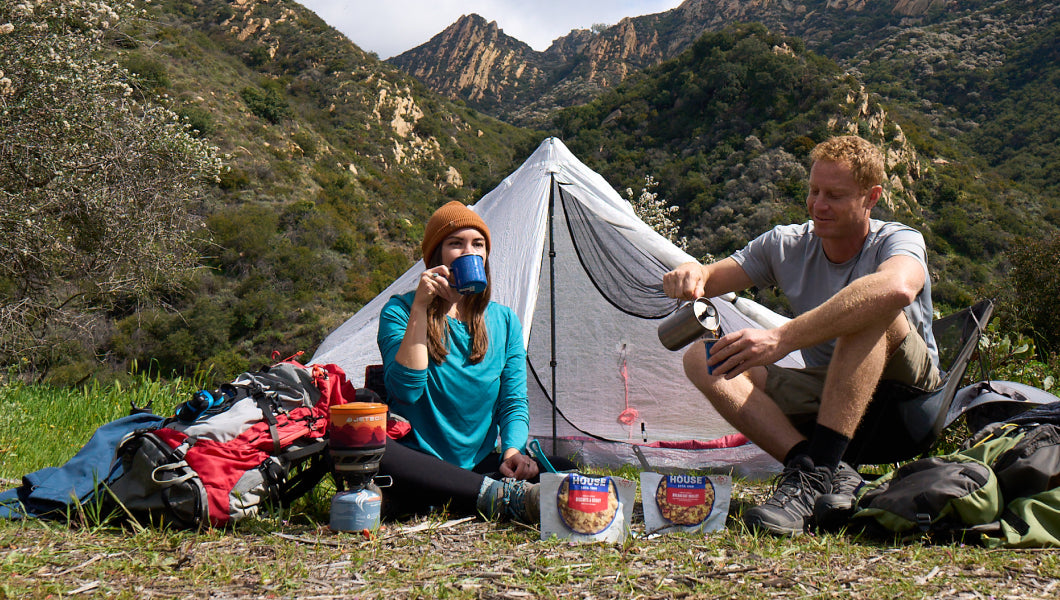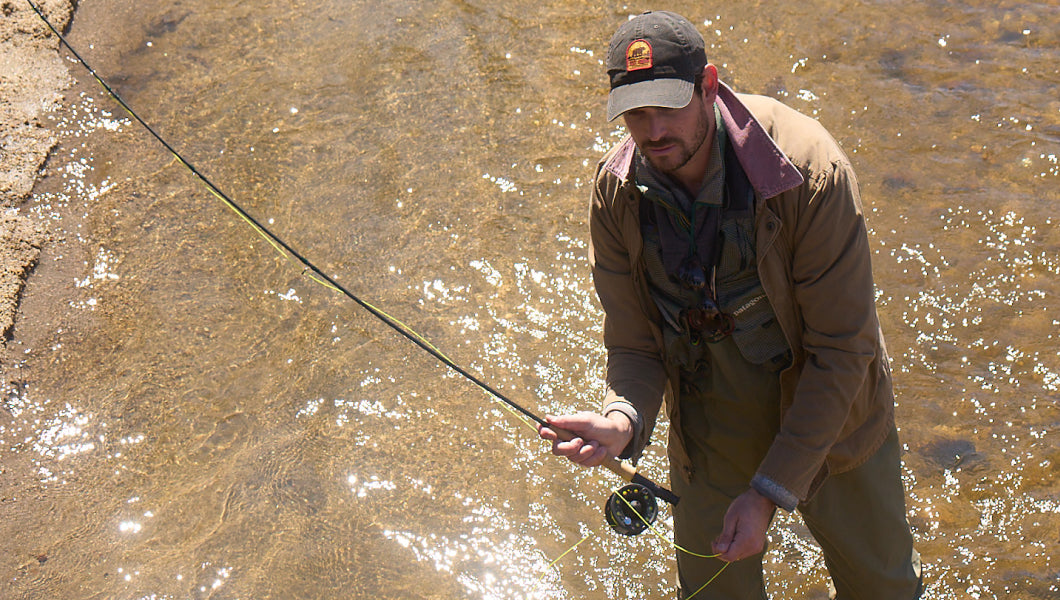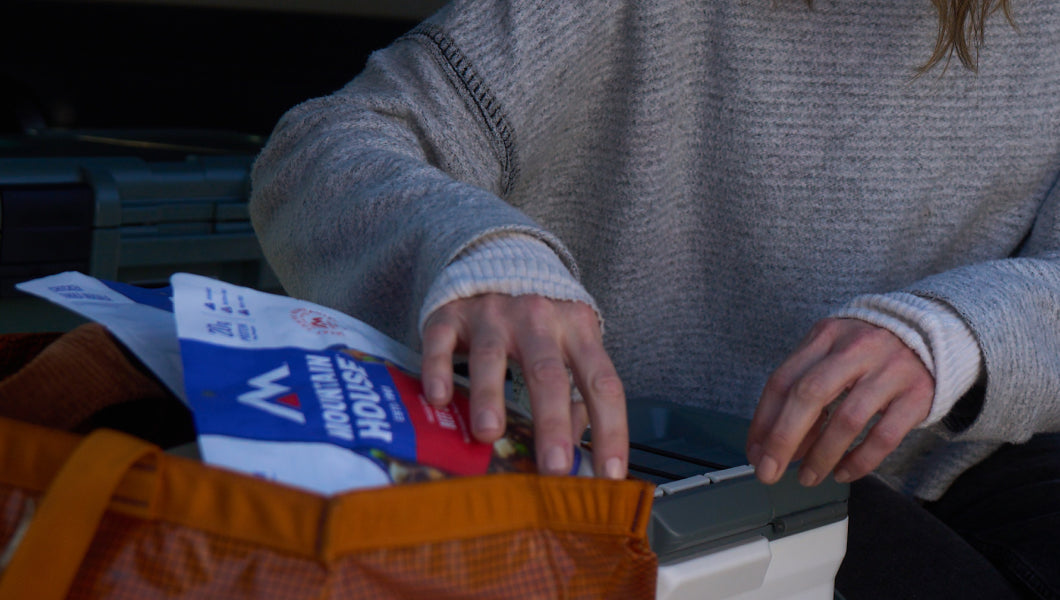Inspired for an Adventure? Check out Beef Stroganoff - Pouch and Beef Stew - Pouch
Free Ground Shipping On All Orders
Over 2,100 Reviews
Add description, images, menus and links to your mega menu
A column with no settings can be used as a spacer
Link to your collections, sales and even external links
Add up to five columns
Add description, images, menus and links to your mega menu
A column with no settings can be used as a spacer
Link to your collections, sales and even external links
Add up to five columns

Ultimate Solo Backcountry Hunting Gear Guide
There are all sorts of manners and modes of hunting, but for sheer adventure, challenge, and personal fulfillment it's hard to beat the solo backcountry hunt. This is the ultimate test of a self-sufficient hunter, plus one of the premier wilderness experiences of any kind.
That's true whether or not you end up bagging anything. Being out in big, remote terrain by yourself, attuning your senses completely to the landscape and the animals on it, far from traffic and jibber-jabber and the 27-7 news cycle—that's a profound reward, regardless of the tangible outcome of your hunt.
Pulling off solo backcountry hunts demands that much more preparation and conditioning, though. It's just you out there, after all—well, you and the elk, or the muleys, or the bears—and having everything you need for both everyday logistics and emergency preparedness is entirely on your shoulders (literally). The last thing you want to discover out there in the wilds is a forgotten piece of essential equipment, or that you've failed to pack enough of the right kind of food to fuel your considerable exertions.
All this points to the importance of ironing down a backcountry hunting gear list ahead of time and checking off items as you pull them together and pack them up. This backcountry gear list is always going to be personalized to some degree for your specific needs, and it will change over time until you've hit upon a reliable, go-to inventory and meal plan. Usually, this means ditching extraneous or poor-performing gear, honing things down to a responsible minimum of good quality stuff that meets your needs and has your back just in case something unexpected or complicated occurs, such as an injury, nasty weather, or getting hardcore turned around.
Whether you're a newbie or a seasoned backcountry hunter, what you pack can make or break your hunt. And when it comes to solo wilderness hunting, “breaking” a hunt can sometimes mean putting you in big-time trouble far from civilization. What follows is a guide to compiling your own backcountry packing list. It's less an actual, nitty-gritty checklist and more an explanation of the general categories of wilderness solo-hunt essentials so you've got a foundation to build on in the context of your own preferences and needs.
(And right at the start, we'll point you to some additional resources from the Mountain House blog: our beginner-friendly introduction to hunting, and our rundown of hunting-season safety.)
Ultimate Solo Backcountry Hunting List
Let's dive into a basic solo-hunter gear list, starting with a pretty darn fundamental part of the operation: the backpack.
Hunting Packs
You definitely don't want to skimp on your backpack—we reckon that goes without saying. A key difference between recreational backpacking and backcountry hunting is that backpackers are generally carrying out a lighter pack at the end of the trip, whereas backcountry hunters are at least planning on (fingers crossed) hauling out a heavier load than they started with.
While you can make a backcountry hunt work with a regular, general-purpose backpacking pack, that's going to require more trips lugging out smaller amounts of a kill. Investing in a hunting-specific, multi-day backpack, specially made with a heavy-duty pack frame and other design features to tote much heavier loads, is really the way to go if you're interested in solo backcountry hunting.
The size of your pack depends on the length of hunting trips you're planning on typically taking, but generally speaking, you'll want a backpack volume somewhere between 3,000 and 6,000 cubic inches. A backcountry hunter heading out for a week or more may need a bigger pack, though ultralight folks may be able to get by for that period with a smaller one.
Spend plenty of time making sure your backpack fits you properly and that it's comfortable and snug when worn with a load. A poorly fitting or uncomfortable backpack can absolutely ruin your solo wilderness hunt, and even end up injuring you.
Clothing
Aside from a bit more camo and blaze-orange, clothing for a solo backpack hunt looks pretty much like the outfit for any shoulder-season wilderness trekker. You should pack for effective layering, with moisture-wicking base layers, insulating layers, and shell layers giving you the means of responding to different weather conditions. Remember, a typical solo backcountry hunt will test your thermoregulation: You'll be sweating your way up steep slopes or across relentless ravines, sure, but also sitting for long periods glassing slopes. There'll be chilly—maybe even frigid—evenings and mornings, and hot afternoon slogs over rough country.
Avoid cotton and go with merino wool and synthetics when it comes to your backcountry clothes. Here's a basic breakdown:
- Short-sleeve and long-sleeve base-layer top
- Long underwear bottoms
- Insulating tops & bottoms (hoody, fleece, etc.)
- Waterproof/breathable shell, rain gear
- Down jacket/parka
- Sun hat & wool/merino beanie
- Gloves/mittens
- Lightweight & heavyweight socks
Rugged and insulating boots are a must: Hunting is a cross-country activity, after all, and you need footwear that can handle all kinds of substrates. And don't forget the essential accessories: knee gaiters, sunglasses, bandanas, etc.
Shelter
An advantage of solo hunting is you can pare down the bulk and weight of your shelter. A lightweight one-person tent is a great choice, but a tarp tent or tarp shelter—such as those erected with trekking poles—can be a fine alternative for shaving off even more weight and saving more space.
As with so much on this list, you need to factor in the season and the environment when selecting a shelter: A late-summer bowhunter likely won't need as robust and weather-proof sleeping quarters as a rifle hunter headed for the high country in October or November.
Pack a ground cloth, tarp, or model-specific tent footprint for the floor of your shelter.
Sleeping Gear
While it's generally best to pack a sleeping bag rated to at least 10 degrees colder than the temperatures you expect to be dealing with on your hunt, remember you can boost warmth inside the bag with a bag liner and/or by wearing insulating layers to bed. A sleeping pad—closed-cell foam, self-inflating, or another kind—provides essential insulation on those chilly fall or spring nights. More than a few backcountry hunters bring along an inflatable/collapsible pillow as a luxury, though others simply choose to use wadded-up outerwear or other clothing to rest their weary head on.
Cookware & Food
As a solo backcountry hunter, you don't need loads of cookware: Just a cookpot and a long-handled utensil (sporks are ideal!). Nest your fuel canister and stove within the pot for maximum space efficiency—if you're using a canister stove with butane or isobutane fuel, that is. Liquid fuel can be a better choice for longer hunting trips, and for those conducted in particularly cold weather or up at high elevations.
When it comes to food, think calorie-rich (to meet your energetic demands out there) and varied (to keep things from getting boring). Depending on the sort of hunting you're doing, you'll likely want to be intaking anywhere from 3,000 to 6,000 calories per day—significantly more than you're normally putting back at home.
Bring lots of high-quality snacks (energy bars, nuts, chocolate, and the like) to keep you satiated and powered up throughout the day when often enough you're not going to want to crack out the stove. Given the season's shortening days and dropping temperatures, plus the realities of maximizing daylight and working up a mean hunger covering ground, quick-cooking/instant/just-add-water meals are best for breakfast and dinner.
Water
Hydration's even more important than food out there on your backcountry hunt. Pack a water filter or purifier alongside your water bottle and/or bladder.
Hunting-Specific Gear
We don't have the room to go into all the essentials when it comes to your chosen hunting weapon, be it a bow or a rifle. But obviously, bring along any necessary associated gear for it: extra broadheads, stabilizers, sight tape, and Allen wrenches for bowhunting, for example.
This category also includes your bagged game kit, secured in a drybag or stuff sack, and including such essentials as knives, sharpener, game bags, and cordage for securing carcasses and hanging meat.
Optics are likely to be some of the heaviest (and priciest) components of your kit, but they're also among the most important. Being able to adequately glass for game and to assess the sex, age class, condition, and distance of potential quarry are fundamental, making a pair of binoculars or two, a spotting scope, and a rangefinder very much worth lugging along. Don't forget the lens-cleaning cloth...
Then there are scents and calls, such as that trusty bugle for wilderness elk hunting. And, of course, make sure to safely and securely stow your hunting license and tags.
Navigation Essentials
Bring that GPS, absolutely: Nothing beats the ability to set waypoints when out scouting or actively hunting. But make sure you've got a baseplate compass and the appropriate hard-copy topo maps for your hunting area, as well.
Miscellaneous Gear: Wilderness Basics & Safety Essentials
Here's a catchall run-down of some other wilderness essentials to have along, including safety must-haves for those times when things go south when backcountry hunting (not counting your map, compass, and other aforementioned items that also can save your neck in a pinch).
- Headlamp & extra batteries
- Cell phone
- Satellite messenger (Garmin InReach, etc.)
- First-aid kit
- Duct tape and/or electrical tape
- Paracord
- Trash bag (handy as an emergency poncho and for securing meat in a pinch)
- Chapstick
- Sunscreen
- Toothbrush, toothpaste, toilet paper, & other toiletries
If you're hunting in bear country—and particularly if you're hunting in grizzly country—don't forget your bear spray, not to mention either a bearbag and rope to hang it with or a bear canister.
Hunter Apps
Maybe you want to go totally old-school, and that's great, but otherwise, you might well benefit from some of the many awesome apps out there targeted at outdoor users in general and hunters specifically. From mapping apps to resources for monitoring weather, these can be fantastic tools to reinforce your own woodcraft skills. Examples of solid hunting apps include GoHunt Insider, GoWild, and HuntStand.
Things to Consider
When hunting in the backcountry, there's often great value in setting up a base camp and foraying out from there, sometimes overnight via rough-and-ready “spike camps.” These allow you to move about more lightly on the landscape as you scout for game. If you're not hunting crazy-deep into the backcountry, you may be able to efficiently arrange a long hunt by stowing food and fuel in your rig, then returning to it midway through the hunt to restock.
Springing a bit extra for titanium cookware and other gear can significantly reduce your pack weight.
Speaking of pack weight, we've so far not mentioned the option of doing a solo backcountry hunt with stock. Horses, mules, llamas—even goats—can help haul in gear and haul out meat and racks, whether you manage the animals yourself or you hire outfitters to help you with transport (while still actually hunting by your lonesome).
Choose Mountain House to Power Your Solo Backcountry Hunts
Look no further than our delicious array of just-add-hot-water meals and ingredients here at Mountain House to build out your backpack-hunting larder! We've been feeding wilderness hunters for more than half a century with our nutritious, super-packable, and super-convenient freeze-dried eats.

How to Clean a Fish Before Cooking Step-by-Step Guide

Best Ice Fishing Lakes in the United States for Anglers


Stay Hungry for Adventure
Sign Up for Delicious Outdoor Meals & Exclusive Offers!


Join the adventure
©2024 Mountain House — All Rights Reserved.
Your Cart is Empty
Continue ShoppingYour Cart
Subtotal
$0.00
EXPRESS PAYMENT METHODS AVAILABLE IN CHECKOUT
Taxes and Shipping Calculated at Checkout














